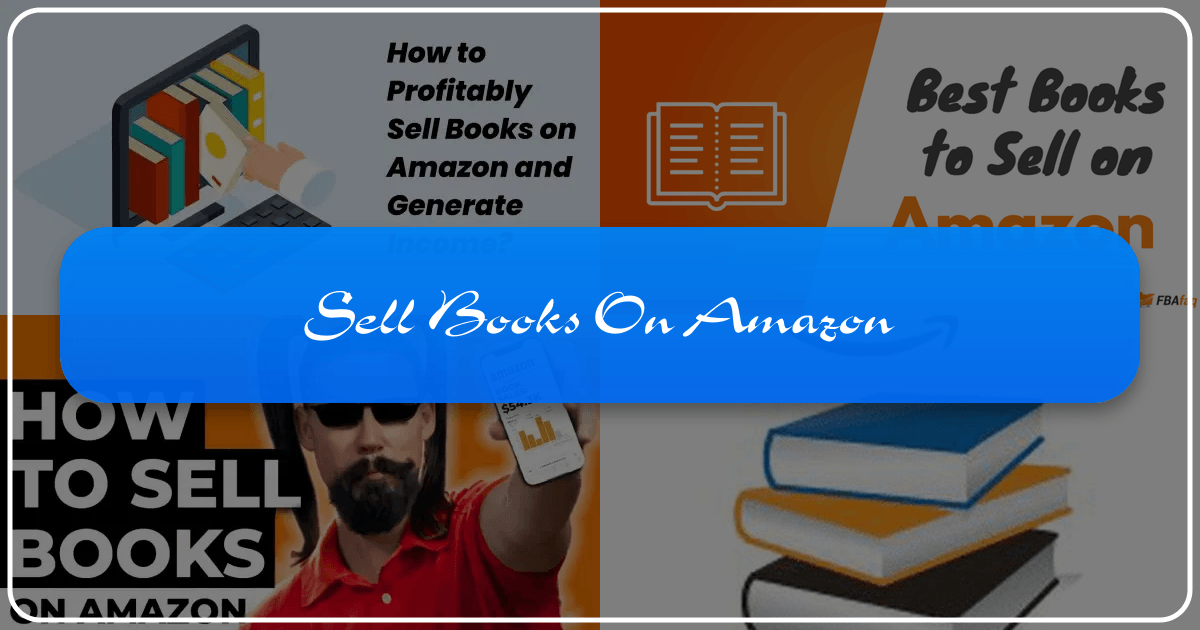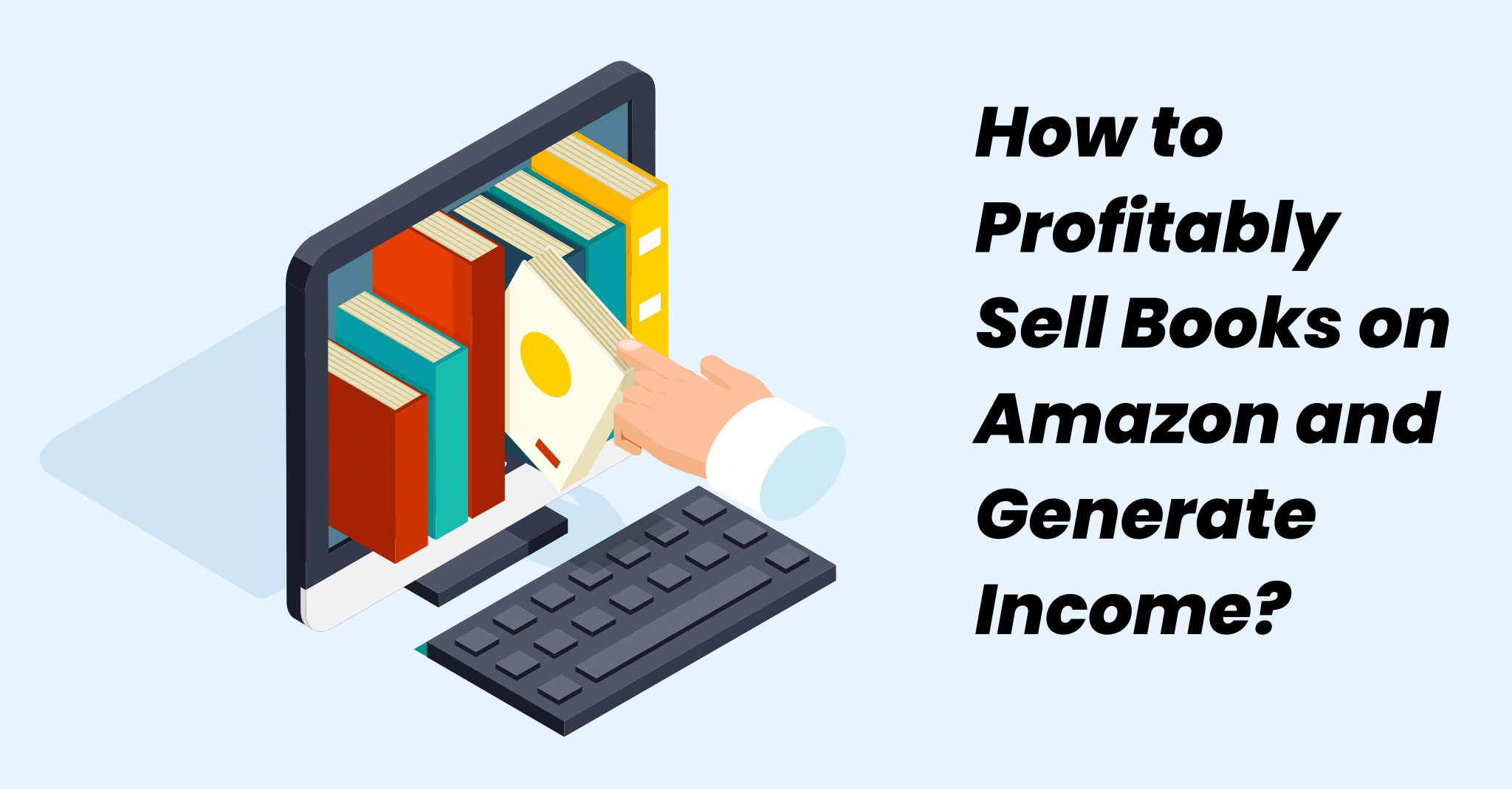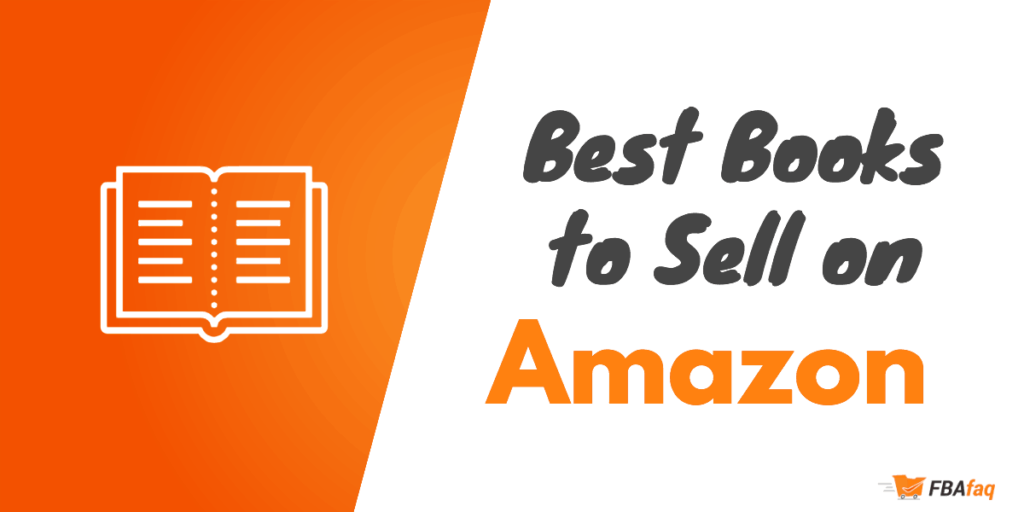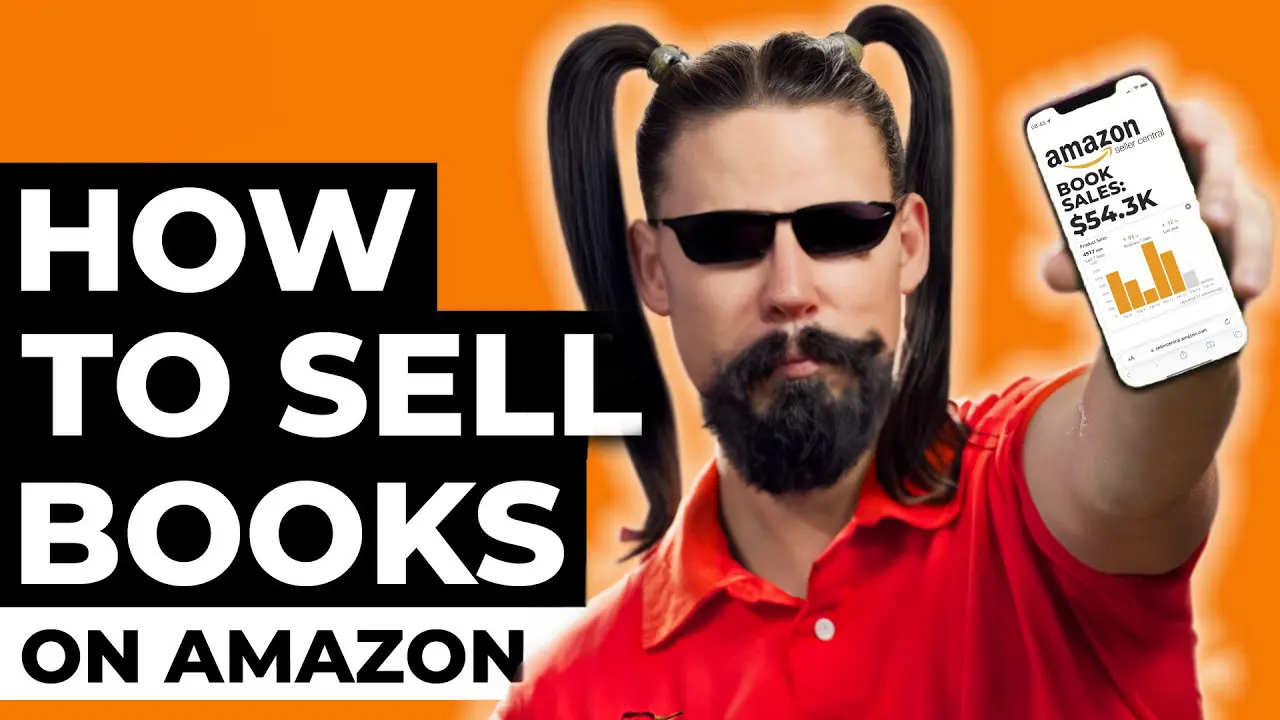Sell Books on Amazon: A Comprehensive Guide for 2025

The online book market is booming. Revenue is projected to continue its upward trajectory, making it an ideal time for both established and aspiring booksellers to capitalize on this lucrative opportunity. Whether you’re selling used books, new releases, rare editions, or self-published works, Lbibinders.org offers a detailed guide to help you navigate the Amazon marketplace successfully. This guide covers everything from sourcing inventory and selecting a selling plan to pricing strategies, listing optimization, fulfillment options, and marketing tips for maximizing your reach and sales.
Understanding the Amazon Book Market
Amazon dominates the online book market, accounting for a significant portion of book sales. The platform offers a vast audience, reaching millions of potential customers worldwide. This expansive reach presents a substantial advantage for booksellers, but it also means facing significant competition. To stand out, you need a well-defined strategy and a deep understanding of the Amazon ecosystem.

Book Formats and Conditions
Amazon allows the sale of books in various formats:
- Hardcovers: These offer a premium feel and often command higher prices.
- Paperbacks: More affordable and widely accessible, paperbacks are a popular choice for many readers.
- Ebooks: Digital versions offer convenience and are often priced lower than print editions. However, direct ebook sales are often handled differently on Amazon, sometimes involving a different set of tools and fees.
- Audiobooks: This expanding market presents another avenue for reaching listeners through Audible. However, audiobooks often require a distinct listing process and may be subject to different regulations.
The condition of your book significantly impacts its price and saleability:
- New: Books in perfect condition, untouched and unopened.
- Like New: Shows minimal wear; virtually indistinguishable from new.
- Very Good: Minor wear or imperfections, but generally in excellent condition.
- Good: Shows more significant wear, possible markings or highlighting.
- Acceptable: Shows considerable wear, but is still readable.
Sellers need to accurately reflect the condition in their product descriptions to avoid disputes and maintain customer satisfaction.
Sourcing Books for Resale
Successful bookselling on Amazon hinges on effectively sourcing your inventory. Multiple avenues exist, each with its own advantages and disadvantages:
Purchasing New Books in Bulk: Collaborating with wholesalers, distributors, or publishers lets you acquire large quantities at discounted rates. This approach is best suited for sellers with significant storage space and capital to invest upfront. Consider working with a fulfillment service like MyFBAPrep to help manage inventory and stay compliant with Amazon’s regulations. This option is typically best for those selling new books and requires strategic planning for pricing and inventory management.
Acquiring Used Books: Second-hand books present a cost-effective option. Sources include:
- Thrift stores and used bookstores
- Library sales and discard books (Check local regulations and policies concerning the sale of discarded library books)
- Estate sales and garage sales
- Online marketplaces (like eBay)
- Your personal collection (this is a great starting point for those with a pre-existing library)
Careful evaluation of the books’ condition and market demand is essential when using this approach. You will need to know how to price competitively while still turning a profit. Note that Amazon has specific guidelines about the description and condition of used books.
Dropshipping: This involves partnering with a third-party provider who stores and ships the books directly to your customers. This eliminates the need for your own storage, but your profits will be affected by the third-party provider’s fees. Amazon has specific rules concerning dropshipping, so familiarize yourself with their policies.
Self-Publishing (Kindle Direct Publishing): If you’re an author, Amazon’s Kindle Direct Publishing (KDP) platform provides an easy way to sell your own ebooks. KDP also offers print-on-demand services so you can offer print versions without holding significant stock. This eliminates most of the need for warehousing and shipping, allowing authors to focus on writing.
Each sourcing method calls for a different level of investment, effort, and expertise. Consider your budget, storage capabilities, and the amount of time you’re willing to dedicate to sourcing when choosing your approach.
Choosing Your Selling Plan and Fulfillment Method
Amazon offers two primary selling plans on Seller Central:
Individual: Suitable for casual sellers with limited inventory. You only pay per item sold, in addition to referral fees, but have less access to seller tools than the professional plan.
Professional: Designed for larger businesses selling multiple products. This option involves a monthly subscription fee, regardless of sales, but comes with numerous additional features, including inventory management tools and the ability to create bulk listings. It gives you access to more advanced marketing options.
The best plan depends on the scale of your operation. The individual plan is a low-risk entry point, while the professional plan is better for sellers aiming for significant sales volumes.
After choosing a selling plan, the next critical decision concerns fulfilling customer orders:
Merchant Fulfilled Network (MFN): You handle all aspects of order fulfillment – storage, packaging, and shipping. This gives you complete control but demands more time and resources. MFN requires a detailed fulfilment plan that accounts for storage, packaging, shipping, and handling returns.
Fulfillment by Amazon (FBA): Amazon handles fulfillment, from storage and packaging to shipping and returns. This provides significant convenience and a competitive advantage (like Prime eligibility). However, FBA involves fees and compliance requirements. Thoroughly understanding FBA’s rules and regulations is crucial for maximizing your profitability and efficiency. Again, working with a 3PL like MyFBAPrep could significantly reduce the stress associated with this method.
Dropshipping: The supplier manages fulfillment. This strategy minimizes upfront investment but reduces profit margins. Compliance with Amazon’s dropshipping rules is essential.
Consider your resources, operational capabilities, and desired level of control when deciding on the ideal fulfillment method. Some sellers use a mix of FBA and MFN, leveraging the strengths of both approaches.
Optimizing Your Amazon Book Listings
A successful Amazon book listing necessitates effective optimization. This involves creating detailed and compelling listings that attract buyers and boost your chances of winning the buy box.
Listing Best Practices
Accurate and Detailed Product Information: Provide precise information on the book’s title, author, ISBN, publisher, edition, publication date, and format. For used books, provide a detailed description of their condition. Ensure your information is accurate and consistent across all listings.
High-Quality Images: Use clear, well-lit images that showcase the book’s cover and condition. Multiple images from various angles can be beneficial.
Compelling Book Descriptions: Write persuasive descriptions that highlight the book’s key features and benefits. Use keywords that potential customers are likely to search for. Employ effective marketing techniques in your writing.
Strategic Keyword Targeting: Thoroughly research relevant keywords to enhance your book’s visibility in Amazon’s search results. Utilize both broad and long-tail keywords to improve discoverability.
Competitive Pricing: Research competitor prices to determine a competitive price point that maximizes your profit while remaining attractive to buyers. Use Amazon’s pricing tools and algorithms to gain insights into ideal price setting. Consider sales and promotional periods.
Effective listing optimization is an ongoing process. Monitor your listing performance, tracking keywords, sales, and customer reviews to identify areas needing improvement.
Monitoring Sales and Managing Inventory
Selling books on Amazon is not a passive endeavor. It requires ongoing monitoring of sales, trends, and inventory levels.
Tracking Sales Performance
Regularly review your sales data to identify best-selling and slow-moving items. This data informs inventory replenishment and pricing adjustments. Utilize Amazon’s analytics tools to gain comprehensive insights into your sales trends.
Managing Inventory
Effective inventory management is key. Maintain sufficient stock of high-demand titles while minimizing storage costs for slow-selling items. Develop a system for tracking your inventory across different channels.
Identifying and Adapting to Market Trends

Stay informed about market trends by researching best-seller lists, monitoring book clubs and forums, and using market research tools like JungleScout. This helps identify emerging genres, authors, and titles to inform your inventory decisions and maintain a competitive edge.
Handling Slow-Moving Inventory
Develop a strategy for handling books that aren’t selling. Options include:
- Price Adjustments: Reducing the price (even slightly) can increase sales.
- Bundling: Amazon does not allow books to be a primary item in bundles, but they can be included as secondary items to enhance the value of other products you sell.
- Amazon PPC Ads: Use pay-per-click advertising to drive traffic to slow-selling listings.
- Wholesale Reselling: Sell your surplus stock to other resellers.
- Donation: Consider donating unwanted books to charities or libraries.
Proactive inventory management is essential for optimizing profitability and minimizing storage costs, particularly for FBA sellers.
Building Your Bookselling Business
Success on Amazon requires a long-term perspective and continuous improvement. Here are a few key strategies to enhance your bookselling operations:
Customer Service: Excellent customer service is crucial. Respond promptly and professionally to customer inquiries, and address issues effectively.
Feedback Management: Regularly check your customer feedback and reviews. Positive reviews boost your ranking, so work towards delivering a superior customer experience. Address negative feedback constructively.
Marketing and Advertising: Amazon offers various advertising options. Utilize these to increase your book’s visibility and drive sales. A good marketing and advertising plan is essential for increased sales and brand awareness.
Branding: Create a consistent brand identity to help your products stand out from the competition. Amazon allows for individual brand registry that will benefit your listings.
Expansion: Once you establish a profitable business, consider expanding your product offerings or exploring international markets through Amazon Global. Consider building your own website or using other online book selling platforms in conjunction with Amazon.
Continuous learning and adaptation are essential. Stay updated on Amazon’s policies, algorithm changes, and best practices to remain ahead of the competition and maximize your success. Leveraging other online bookselling platforms is also a good option for growth.
This comprehensive guide offers a solid foundation for selling books on Amazon. By implementing these strategies and consistently adapting to the changing marketplace, you can build a thriving and profitable bookselling business. Remember that consistent effort, a keen understanding of your target audience, and a commitment to providing exceptional customer service are paramount to long-term success.
